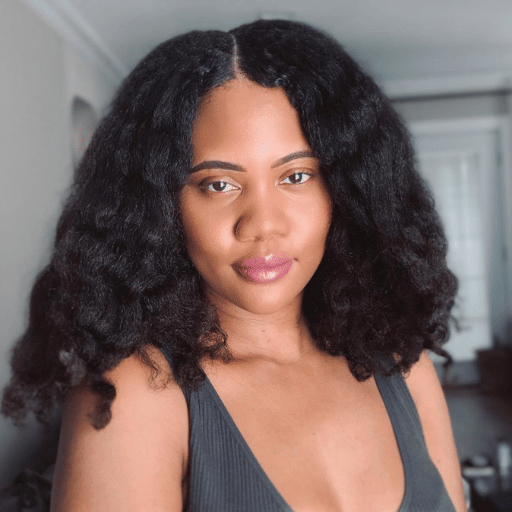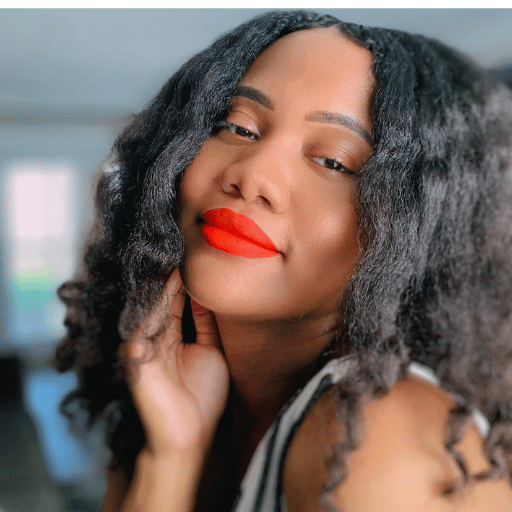Do you ever wonder if you are deep conditioning your low porosity hair effectively? It’s hard enough to find products that help your hair feel moisturized for more than day, but what if your deep conditioner could help to prime your hair for strength, better length retention and the perfect balance of moisture, protein and elasticity. Continue reading to learn all about how to deep condition low porosity hair.
How Do You Use Deep Conditioner For Low Porosity Hair?
You will want to select the deep conditioner of choice that targets what your hair is lacking or what you want more of. If your hair is dry or tends to get dried out quickly, you might want to use a moisturizing deep conditioner. If your hair is breaking off easily, unable to hold its curl and losing curl definition even with styling products, this might be an indication that a protein treatment is in need.
The hair is a fiber made of proteins and so it is important to know that hair needs a healthy moisture and protein balance. Sometimes when these two factors are not the case for the lack of stretch and bounciness of your curl, an elasticity treatment may be the solution. If your hair seems brittle and prone to breakage no matter what you use, an elasticity treatment can possible do the trick! We love Ouidad Curl Recovery Melt Down Extreme Repair Mask for this!
Once you have selected your deep conditioner of choice, you will want to follow these key steps to get your low porosity hair back on track!
Step 1: After thoroughly cleansing your hair with a mild clarifying shampoo, rinse your hair thoroughly and do not use a rinse out conditioner. You will want the cuticle layer on the hair strand lifted to take in the nourishing properties of the deep conditioner.
Step 2: Ring your hair out so that it is not soaking wet. Work section by section and apply your deep conditioner of choice to the hair strands. Be sure to avoid applying your deep conditioning treatment to your scalp, as this can cause irritation.
Step 3: Once the deep conditioner is applied to all of your clipped away sections, go in with a detangling brush to smooth the product in completely while you further detangle (hair should be already detangled under running water during the shampoo phase, so this step should be very quick). This helps to lay the cuticle layer of the hair down, which will create a shiny effect when the hair is rinsed off.
Step 4: Apply a plastic processing cap and sit under a hooded hair dryer or a hair steamer for 20 minutes.
Step 5: Remove plastic processing cap and rinse out deep conditioner under cool running water to lock the moisture and vitamins from the product in.
Step 6: Blot soaking wet hair with microfiber towel and proceed to style.
This post is all about how to deep condition low porosity hair.
What Is Low Porosity Hair?
Having low porosity hair is a pretty common struggle in the natural hair community and not because it’s a bad thing, it’s just that there can be somewhat of a learning curve to getting products to be absorbed into the hair.
Low porosity hair tends to have its cuticle layer (microscopically), very tightly compact. This can affect how moisture is absorbed into the hair and how fast it is released out of the hair.
The cuticle layer of the hair follicles are not only packed tightly as mentioned before, but they lie flat on the strand acting as a barricade when it comes to allowing anything in. Maybe this design is a good thing in some aspects, as it may help to reduce the internal absorption of toxins from the environment and UV exposure which could be very damaging to the hair over time.
What Are The Traits Of Low Porosity Hair?
Low porosity hair tends to appear unphased when water or any moisturizing products come into contact with it. You will notice that when water touches your hair, the water will actually bead up at first before it actually gets absorbed into the strand.
The water and other products will sit on top of the hair unless there is some type of warmth to open the hairs cuticle later. This is why it is important to wash and condition your hair under warm water and use cool water when rinsing out a deep conditioner. The warm water opens the cuticles and the cool water closes them shut again.
When using a deep conditioner, one of the key components in getting the product to penetrate low porosity hair, is to use indirect heat. By using a hooded dryer on medium to low heat or a hair steamer, you can expect to achieve the maximum absorption of your deep conditioning treatment (as long as your hair is clarified using a shampoo that effectively removed product build up).
How Long Should You Deep Condition Low Porosity Hair?
It is always recommended to check with the instructions on the label of your product, as processing times can vary. However the general rule of thumb to deep condition low porosity hair, is to do it for no more than 20minutes at a time under indirect heat or steam.
Going any longer with your deep conditioner can wreak havoc on your hair, especially if it is a protein or elasticity treatment. You may be tempted to keep your deep conditioner in all day or overnight, but that is never a good idea. Check out this post on the damage that can be done by leaving conditioner in for too long by clicking here.
Deep conditioners are formulated with smaller molecules that are made to be able to be absorbed into the hair, when compared to a regular rinse out conditioner which has larger molecules meant for just coating the hair. The general time it takes for a deep conditioner to be absorbed into the hair is about 15-20 minutes with indirect heat. Anything more than that and you’ll just have products sitting on you hair and weighing it down.
Over using deep conditioner can result in moisture overload, which results in hair that is gummy, mushy and soft. It could also lead to protein overload which is hair that becomes so strong it becomes stiff and snaps off very easily. These two issues can happen as a result of constantly leaving your conditioning products passed the recommended time.
So Overall, Here Are The Benefits Of Deep Conditioning Low Porosity Hair:
- Helps to restore moisture levels in the hair.
- Helps to repair protein loss from frequent manipulation, chemical coloring and frequent direct heat styling.
- Helps to add shine and curl bounce to the hair.
- Strengthens the hair from within allowing for length retention due to reduced breakage.
- Can help to reduce frizz once deep conditioner is applied and emulsified into the hair using a detangling brush before heat processing.
- Helps set the tone for your other styling products, making it easier to get through any styling.
- Has the ability to protect the hair from heat damage
Final Thoughts on Deep Conditioning Low Porosity Hair
Deep conditioning low porosity hair can be a game changer in the overall health of your hair, you just have to learn how to effectively deep condition. 1. Always start on hair that is freshly washed. 2. Skip the basic rinse out conditioner so that there is no coating on your hair to block your deep conditioner. 3. Apply your deep conditioner of choice and smooth it in with a detangling brush. 4. Let it work its way into your hair by use of indirect heat i.e. a hooded dryer or steamer. 5. Rinse out with cool water.
I hope this helps you with your low porosity hair! Comment below your favorite deep conditioner for low porosity hair!
This Post Was All About How To Deep Condition Low Porosity Hair.
More In Deep Condition:




Recent Comments